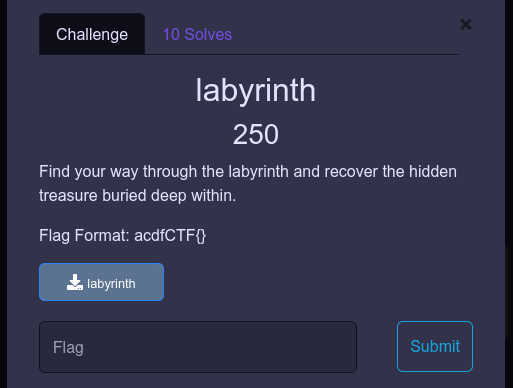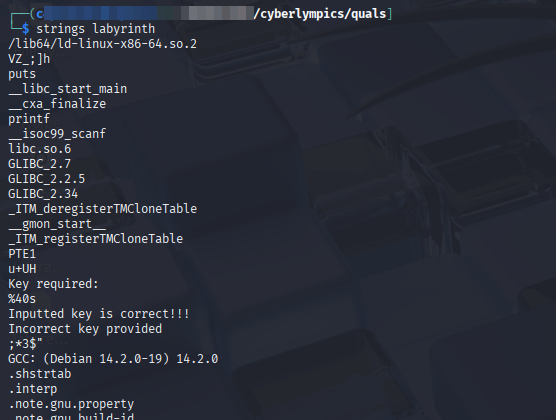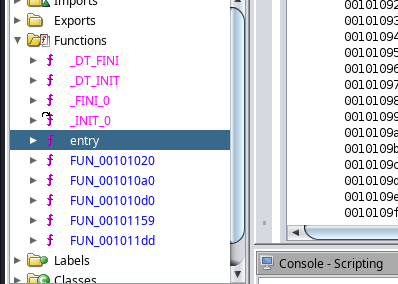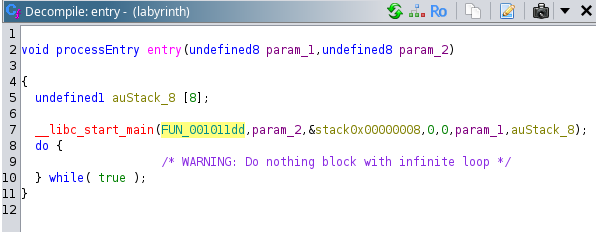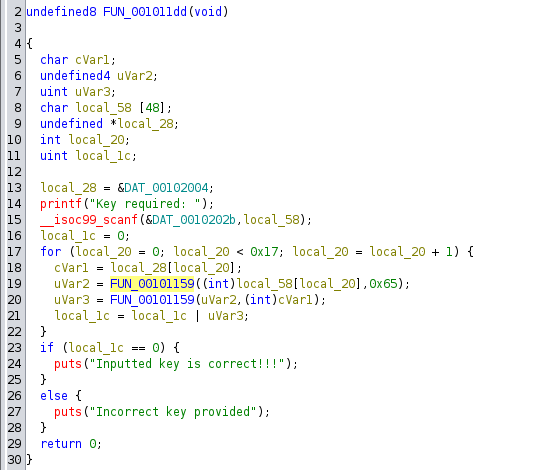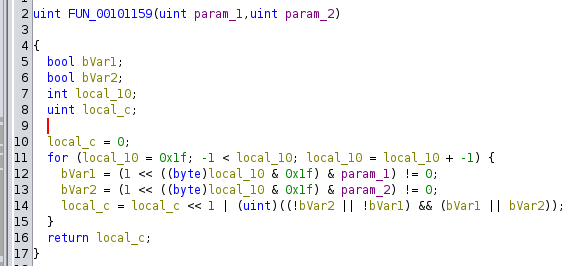Introduction
On Fri, 30th May 2025 — Sat, 31st May 2025, I lead Fr334aks-mini in an exciting Cyberlympics CTF competition an anchor program of the Africa Cyber Defense Forum (ACDF).
The Cyberlympics Kenya CTF (1st Edition) brought together Kenyan cybersecurity teams for a 24-hour battle across challenges like:
- Offensive Cyber Warfare
- Digital Forensics
- Cyber Defense
- Cryptography
- Web Application Exploitation
- System Exploitation
- Malware Analysis
- Reverse Engineering
- Cryptography
- Programming
My team (Fr334aks-mini) secured 6th place for this qualifications round.
We secured position 2 at the finals held on 12 Jun 2025 10:30am - 12 Jun 2025 06:00pm
This writeup breaks down one of the challenges I solved in the qualifications round. Enough talk!
Reverse Engineering
Labyrinth
We re given a file to find our way through…
Checking the file type, we see it’s a stripped ELF, meaning the binary had its debugging symbols and other metadata removed.
Checking it’s strings shows nothing much.
Let’s try and run it.
Seems we need some kind of a key! Let’s fire up ghidra and see what this litlle ELF has in store. We’ve got a couple functions.
We will want to check the main function or entry point of the binary.
- The prompt:
The entry point initializes function “FUN_001011dd”
The program prompts for some key (“Key required: “). The “key” input is read into local_58 (which is a 48-byte buffer). It then compares each byte of the input (local_58) against a hardcoded array (local_28 = &DAT_00102004). If all comparisons pass (local_1c == 0), the key is correct. The function also calls in function “FUN_00101159”
- A custom bitwise comparison
This function compares two bytes (param_1 and param_2) bit-by-bit and returns a result: It iterates over each bit (from bit 31 down to bit 0). For each bit position:
- bVar1 = whether the bit is set in param_1.
- bVar2 = whether the bit is set in param_2.
The result for that bit is computed as: (!bVar2 || !bVar1) && (bVar1 || bVar2) which is equivalent to bVar1 != bVar2 (a XOR operation).
The final local_c is a 32-bit value where each bit is the XOR of the corresponding bits in param_1 and param_2.
- Key check condition
For each byte i (0 ≤ i < 0x17): If local_1c == 0, the key is correct. Since FUN_00101159 is just XOR, we can rewrite this as:
local_1c |= (input[i] ^ 0x65) ^ hardcoded_byte[i]
For local_1c to be 0, all XOR results must be 0: Just like in algebra:
(input[i] ^ 0x65) ^ hardcoded_byte[i] = 0
this simplifies to:
input[i] = hardcoded_byte[i] ^ 0x65
And this means we’d have to XOR the hardcorded bytes with 0x65 to get the key(should be our flag)
- Extracting the hardcoded bytes
The hardcoded array is at DAT_00102004 (referenced by local_28). We need to extract these bytes (length 0x17 = 23 bytes).
To extract these hardcoded bytes we need to dump the data section at 0x102004 We can use objdump, xxd, or even Ghidra. I used xxd for this one:
Since the hardcoded array is at DAT_00102004 (0x102004 in the binary), we can dump the binary and extract the bytes at this offset.
- First, let’s find the offset in the binary file:
The address 0x102004 is a virtual memory address (VMA) and we need to convert it to a file offset (where it physically resides in the binary).
- Let’s check the ELF sections:
We can see that the .rodata section (where hardcoded strings usually reside) is at:
1
2
3
Virtual Address (VMA): 0x2000
File Offset: 0x2000
Size: 0x62 (98 bytes)
The hardcoded key array is at 0x102004 (from the disassembly in ghidra). Since .rodata starts at 0x2000, this means:
0x102004 is inside .rodata (since 0x2000 ≤ 0x102004 ≤ 0x2000 + 0x62).
- Let’s calculate the file offset:
The binary is a PIE (Position-Independent Executable), so the actual .rodata VMA is 0x2000 (not 0x102000). Thus, the hardcoded array at 0x102004 is at:
File Offset = 0x2000 (start of .rodata) + (0x102004 - 0x102000) = 0x2004
(But remember 0x102004 - 0x102000 = 0x4 is the offset within .rodata.)
- Time to dump the bytes at 0x2004:
We need to dump 23 bytes (0x17 in hex) starting at 0x2004 in the file: 
- Reconstructing the key
We need to XOR each byte with 0x65 to get the correct key. I used a short python code for this.
1
2
3
4
5
6
# Author: D_C4ptain
hardcoded_hex = "040601032631231e1d5517540b023a1254110d3a535018"
hardcoded_bytes = bytes.fromhex(hardcoded_hex)
key = bytes([b ^ 0x65 for b in hardcoded_bytes])
print(key.decode())
- Conclusion
The flag was the result of XOR-ing the hardcoded bytes (at DAT_00102004) with 0x65.
Till the next one.
And remember, there are many ways of killing Jerry!



